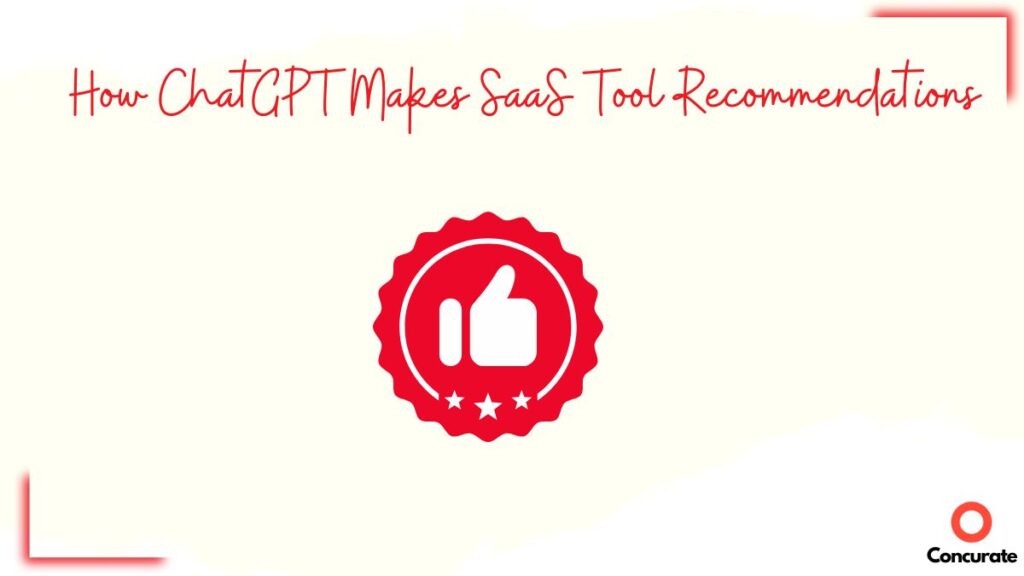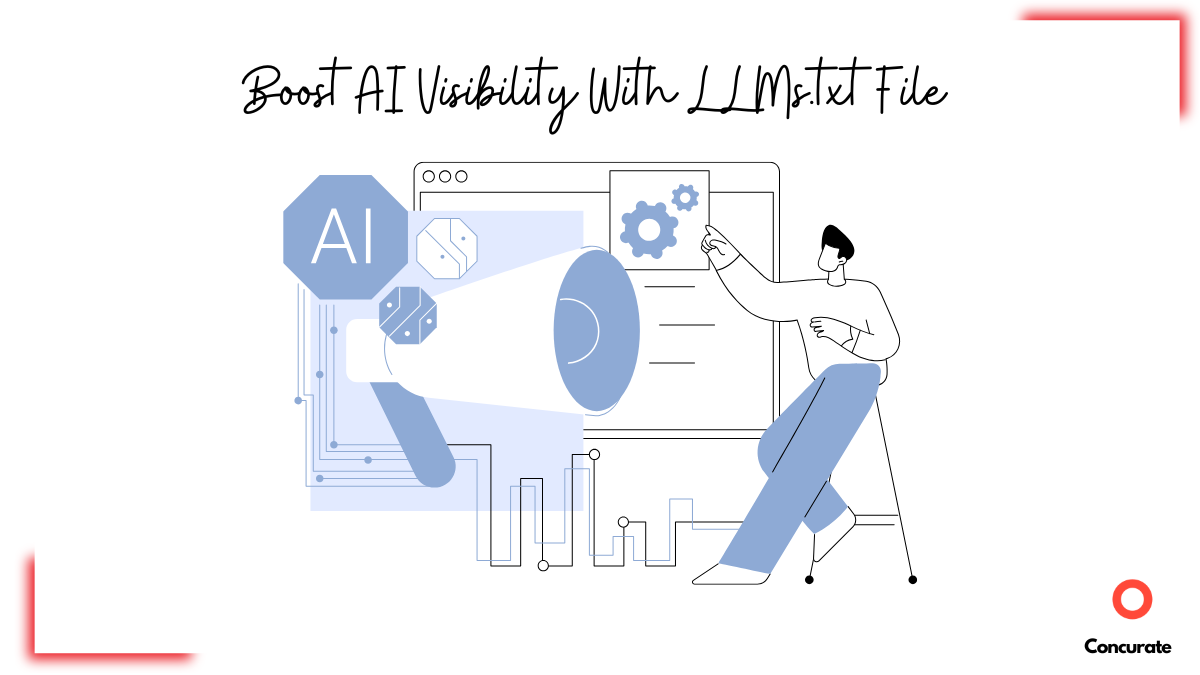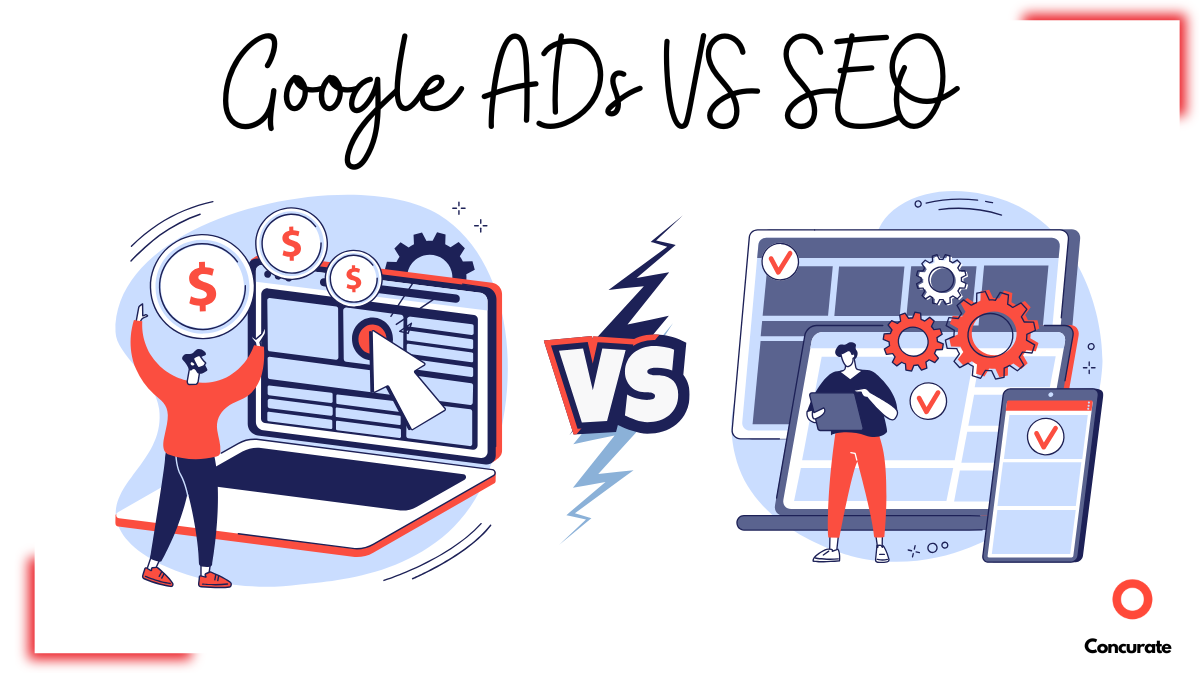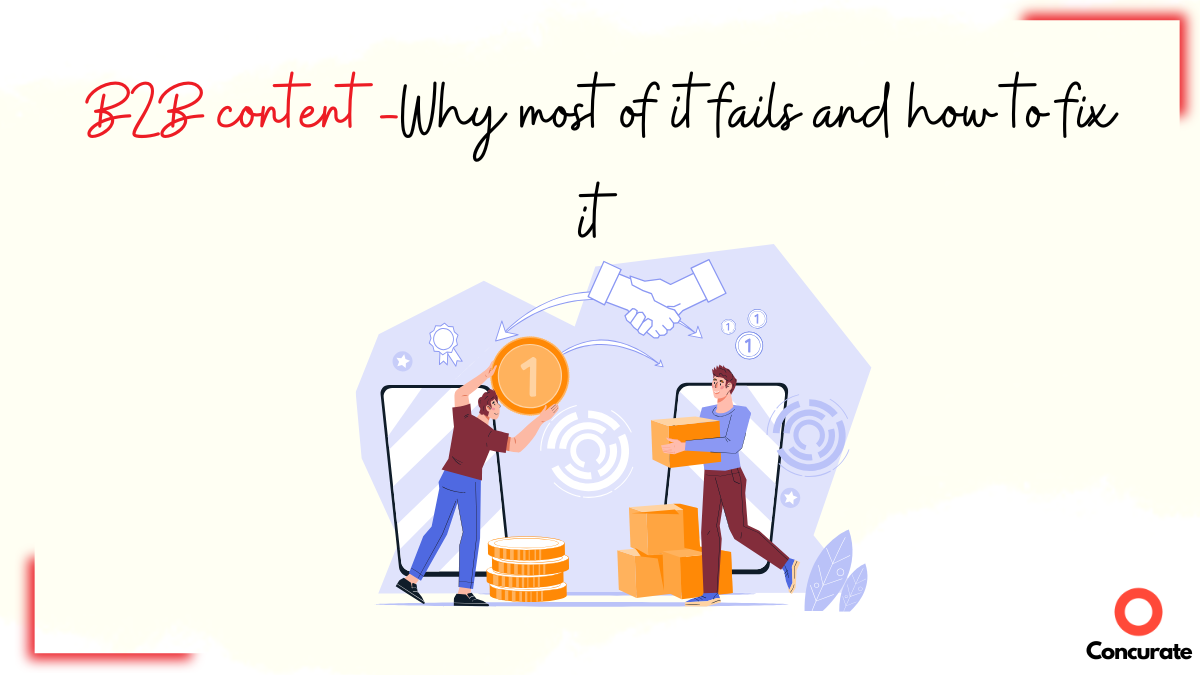Where Does ChatGPT Get Its Information From and How SaaS CMOs Can Use That to Their Advantage
| TL;DR ChatGPT doesn’t randomly pick SaaS tools. It pulls from trusted third-party blogs, review sites, and Wikipedia to form its answers. If your product isn’t mentioned across these sources with clear use cases and buyer context, it won’t show up. We reverse-engineered how it makes recommendations—and this guide shows you how to get in. |
In conversations with SaaS CMOs, I often hear the same question: “What are our prospects typing into ChatGPT, and how can our SaaS tool surface in those exchanges?”
For the first question, there’s no answer yet. OpenAI doesn’t release ChatGPT query data (unlike Google Search Console). No keyword planner. No autosuggest. Just a black-box mystery.
But the second question? That’s where things get interesting. ChatGPT’s knowledge is built from: “public datasets, licensed data, books, software manuals, Wikipedia, open websites, and internet-scale corpora.”
That’s a wide net. But which of these sources actually influence SaaS tool recommendations?
In this post, we’ll peel back the layers and show you exactly where ChatGPT gets its SaaS tool recommendations, illustrate this through experiment-driven examples, and provide you with tactical playbooks to influence outcomes.
What Influences SaaS Tool Recommendations by ChatGPT
“Older people use ChatGPT as a Google replacement. People in their 20s and 30s use it as a life advisor. People in college use it as an operating system.” — Sam Altman.
SaaS buyers—the older crowd, let’s be honest—are now feeding ChatGPT detailed, intent-heavy queries expecting faster, more relevant answers.
But here’s the catch: ranking on Google alone won’t cut it anymore.
ChatGPT isn’t just pulling from top-ranking blogs. It draws from expert roundups, G2/Capterra, vendor docs, Reddit threads, and even Wikipedia.
So we ran an experiment. We asked ChatGPT a series of real-world SaaS queries and traced which sources it leaned on the most.
Here’s what we uncovered:
Query 1
| “Best AI Text to Voice Generation tool suitable for an American female podcaster who would prefer a natural voice, an easy-to-use, and affordable tool within a budget of 10 USD/month.” |
SaaS Tools Recommended by ChatGPT
- ElevenLabs
• $5 Starter plan aligns well with $10 budget
• Known for hyper-realistic American female voices - Speechify
• Free plan with 1,000+ natural voices
• Ideal for podcast-style content; high flexibility - Listnr
• Slightly over budget ($19/mo), but tailored features for podcasters
Source Categories Referenced by ChatGPT And Their Estimated Influence
| S.No. | Source Type | Influence | Sample Citations |
| 1 | Third-Party Blogs | 35% | Descript’s Best AI Text to Speech Software 2025 DemandSage’s 10 Best AI Voice Generators of 2025 (Free & Paid Tools)Techradar’s Best Text-to-Speech Software for 2025FAHIMAI’s Listnr vs Podcastle: Which Tool is Best For Podcasting in 2025? |
| 2 | Official Product Pages/Pricing Information | 30% | Listnr AI Pricing |
| 3 | Wikipedia/Tool Summaries | 15% | Speechify’s Wikipedia Page |
| 4 | Reddit Community Threads | 10% | r/Elevenlabs – Is ElevenLab Price worth it for Content Creators? |
| 5 | YouTube Reviews | 5% | ClickGuide’s ElevenLabs Pricing Explained: Which Plan Offers the Best Value? |
| 6 | News Mentions | 5% | SanFrancisco Chronicle – Melania Trump used AI-generated version of her voice to narrate memoir |
Query 2
| “Best CRM software for a small enterprise with a free plan, does not throw a lot of errors, and has good customer support.” |
SaaS Tools Recommended by ChatGPT
- HubSpot CRM (robust free plan, solid support)
- Zoho CRM (free tier, customization, reliable)
- Freshsales CRM (free plan + reliable support)
- Bitrix24 (generous free version, feature-rich)
- Insightly (freemium with project management integration)
Source Categories Referenced by ChatGPT And Their Estimated Influence
| S.No. | Source Type | Influence | Sample Citations |
| 1 | Third-party blogs | 35% | Forbes Advisor’s 10 Best Small Business CRM Software Of 2025 Techradar’s I reviewed Bitrix24’s CRM and once I got over the steep learning curve I loved its impressive flexibility and affordable pricing Emailtooltester’s – Best Free CRM Software For Your Business |
| 2 | Wikipedia/tool profiles | 25% | Insightly’s Wikipedia, HubSpot’s Wikipedia |
| 3 | News & industry reviews | 20% | US Chamber’s 10 Free or Low-Cost CRM Tools for Small Businesses |
| 4 | Reddit/community threads | 10% | r/CRM – CRM for a small teamr/CRM – Need a simple CRM that’s basically a little more than just Google Sheets for a company that has 2 people |
| 5 | YouTube reviews | 10% | Stewart Gauld’s – My TOP 5 CRM Software for 2025 | Free vs Paid CRMs for Small Business |
Query 3
| “Best cloud-based project management tool for a US-based large enterprise with employee numbers between 500 and 1000.” |
SaaS Tools Recommended by ChatGPT
- Wrike – Designed for enterprise collaboration with custom workflows and real-time dashboards.
- Smartsheet – Excel-like interface with powerful automation and enterprise-grade compliance.
- Asana – Scales well for large teams with structured task management and timeline views.
- Monday.com – Flexible, secure, and highly customizable for enterprise project workflows.
- ClickUp – All-in-one work hub combining tasks, docs, goals, and chat—great for large teams.
Source Categories Referenced by ChatGPT And Their Estimated Influence
| S.No. | Source Type | Influence | Some Sources |
| 1 | Third-Party Blogs | 35% | TheDigitalProjectManagers’ – 25 Best Project Management Software Picked For 2025 TechRepublic’s – 8 Best Cloud-Based Project Management Software Zapier’s – The best enterprise project management software in 2025 |
| 2 | Wikipedia/tool profiles | 20% | Monday.com’s Wikipedia |
| 3 | Industry news/case studies | 20% | Investor’s Monday.com Expanding From SMB Roots Into Enterprise Market |
| 4 | Review sites | 15% | Appvizer’s – Our Top 14 Best Cloud Project Management Software: Free & Paid |
| 5 | Community insights (Reddit) | 10% | r/projectmanagement – Looking for the right PM tools/apps |
Query 4
| “Best employee engagement software with built-in rewards and recognition, employee feedback surveys, seamless integration with payroll and enterprise systems, affordable for mid‑sized companies (250–500 employees).” |
SaaS Tools Recommended by ChatGPT
- Motivosity – recognition + surveys + integrations
- Bonusly – peer-to-peer recognition, reward points
- Workhuman – AI-enhanced recognition, enterprise integrations
- Quantum Workplace – feedback, analytics, and HRIS integrations
- Reward Gateway – recognition, engagement surveys, payroll sync
Source Categories Referenced by ChatGPT And Their Estimated Influence
| S.No. | Source Type | Influence | Some Sources |
| 1 | Third-Party Blogs | 40% | Bonusly’s – Top 20 Employee Engagement Software Platforms for 2025 Teleskope’s – Top Employee Engagement Software in 2025: Best Tools to Keep Your Workforce Connected Achiever’s – 15 employee rewards software platforms of 2025 |
| 2 | Review platforms (G2, Capterra) | 30% | SelectSoftwareReviews’ – The 19 Best Employee Engagement Software Tools of 2025 Softwareadvice’s – Best Employee Engagement Software of 2025 Capterra’s Employee Engagement Software Category Page |
| 3 | Wikipedia/company profiles | 15% | Workhuman’s Wikipedia |
| 4 | News & industry publications | 15% | Workhuman in Financial Times – AI praise-giving tool promises ‘authentic’ insights |
Aggregated Source Influence
Across all queries we tested, third-party blogs and expert roundups were the most cited sources by ChatGPT, followed by review platforms, Wikipedia, and industry news.
In this section, we’ve broken down the top source types by influence, so you know where to focus if you want your product to surface in ChatGPT searches.
🟠 Third-Party Blogs & Expert Reviews (34%)
These carried the most weight across categories. ChatGPT frequently cited curated roundups, SaaS comparisons, and product-specific analysis from websites like TechRadar, Medium, SaaS Websites, etc.
🟠 Review Platforms (18%)
For validating popularity, free plans, or category fit, ChatGPT cited G2, Capterra, TrustRadius, etc.
🟠 Wikipedia / Tool Profiles (15%)
Wikipedia was a trusted source, especially for product background, credibility, or use cases.
🟠 News & Industry Publications (15%)
ChatGPT cited articles to validate trends, AI usage, or enterprise adoption from news portals like The Guardian, Business Insider, etc.
🟠 Vendor Product Pages (6%)
When budget, features, or integrations were mentioned, ChatGPT relied heavily on vendor pages.
🟠 Reddit & Community Threads (4%)
Community-driven feedback, especially on Reddit, added real-world context around reliability, UX, or niche use cases.
🟠 Product Specific Blogs (5%)
These included official blog posts written by SaaS companies, which addressed use cases, deep feature explanations, and competitive differentiators.
🟠 YouTube Review Videos (3%)
These were referenced for influencer-led tool reviews, but only sometimes.
What This Means for SaaS Marketers
As our analysis shows, ChatGPT doesn’t just rely on your website. It pulls heavily from third-party review blogs, neutral comparisons, and even competitor-owned listicles. That means SaaS marketers need to go beyond content marketing and start thinking like PR teams, getting their tool mentioned, cited, and explained across the web.
And it’s not just about mentions. The more consistently your product’s use cases, customer fit, integrations, and differentiators are documented and repeated across diverse sources, the more likely AI tools are to surface them accurately.
👉 That’s exactly where Concurate comes in.
Concurate – Best Content Marketing Agency for Your SaaS
At Concurate, we partner with SaaS companies that take content seriously and expect it to deliver.
Our work has helped clients generate 24+ leads from just three blog posts, earn citations in AI-generated answers, and outperform even Google ads in the U.S. and U.K. markets. We understand that the rules of SEO and content are changing fast in the age of AI, and we’re adapting in real time.
Each Friday, we share what’s working—tested insights, content experiments, and fresh strategies—in a newsletter built for SaaS marketers.
Want to stay ahead? Fill the form below to subscribe.
FAQs
Q1. How to See If AI Tools Are Driving Traffic to Your SaaS Website?
Answer: To see if AI tools are driving traffic to your SaaS site, create a custom exploration report in GA4 using ‘Page referrer’ and ‘Page title’ as dimensions, then filter referrers with this regex:
| .*openai.*|.*chatgpt.*|.*copilot.*|.*perplexity.*|.*gemini.*|.*bard.*|.*gpt.*|.*neeva.*|.*copy.ai.*|.*writesonic.*|.*nimble.*|.*outrider.*|.*edgeservices.*|.*astastic.*|.*bnngpt.* |
This reveals which AI platforms are sending visits, to which pages, and what content is earning citations in AI-generated answers.
Head to this blog for a step-by-step tutorial – “How to See If AI Tools Are Driving Traffic to Your SaaS Website.”
Q2. Tell Me One Hack to Instantly Boost Visibility in AI Tool Searches, like ChatGPT, Perplexity, Gemini, etc
Answer: Create and upload an llms.txt file to your site’s root directory. It’s like a cheat sheet for AI tools that tells them exactly which pages to cite. Just list your best content (product pages, case studies, guides) with one-line summaries in Markdown format, and you’ll start showing up in ChatGPT, Perplexity, and Gemini answers faster.
Here is a blog to guide you on best practices, accompanied by an example: “How to Optimize Website for AI Search Engines Using LLMs.txt File.”
Q3. What SaaS Marketers Need to Know About Google’s AI Mode?
Answer: Google’s AI Mode is replacing traditional blue-link SEO with ChatGPT-style summaries, pulling from in-depth, third-party sources, not just your website.
To stay visible, SaaS marketers must publish context-rich content that answers high-intent buyer questions, shows up in comparisons, and earns neutral brand mentions across the web. Ranking now means being cited, not just indexed.
Curious to learn more? Check this – “Understanding Google AI Mode Search and Its Impact on SaaS SEO and Content!”
Q4. What All do I Need to Get a Wikipedia Page Created for My SaaS Company?
Answer: To create a Wikipedia page for your SaaS company, you need verifiable third-party coverage in reliable, independent sources—think TechCrunch, Forbes, Business Insider, or analyst reports. Press releases, self-published blogs, and product listings don’t count.
You’ll also need a neutral, fact-based draft, free of marketing language, that cites those sources. Without meeting Wikipedia’s notability guidelines, the page will likely get flagged or deleted.
Here are Wikipedia’s notability guidelines for companies and software.
Q5. Tell Me Some B2B SaaS Growth Hacks.
Answer: Start by turning one strong competitor analysis into 50+ high-intent blogs—like comparisons, alternatives, and “why switch” posts—that attract decision-stage buyers actively searching for solutions.
👉 Want more proven growth hacks? 5 Proven B2B SaaS Growth Hacks You Need to Know in 2025.






